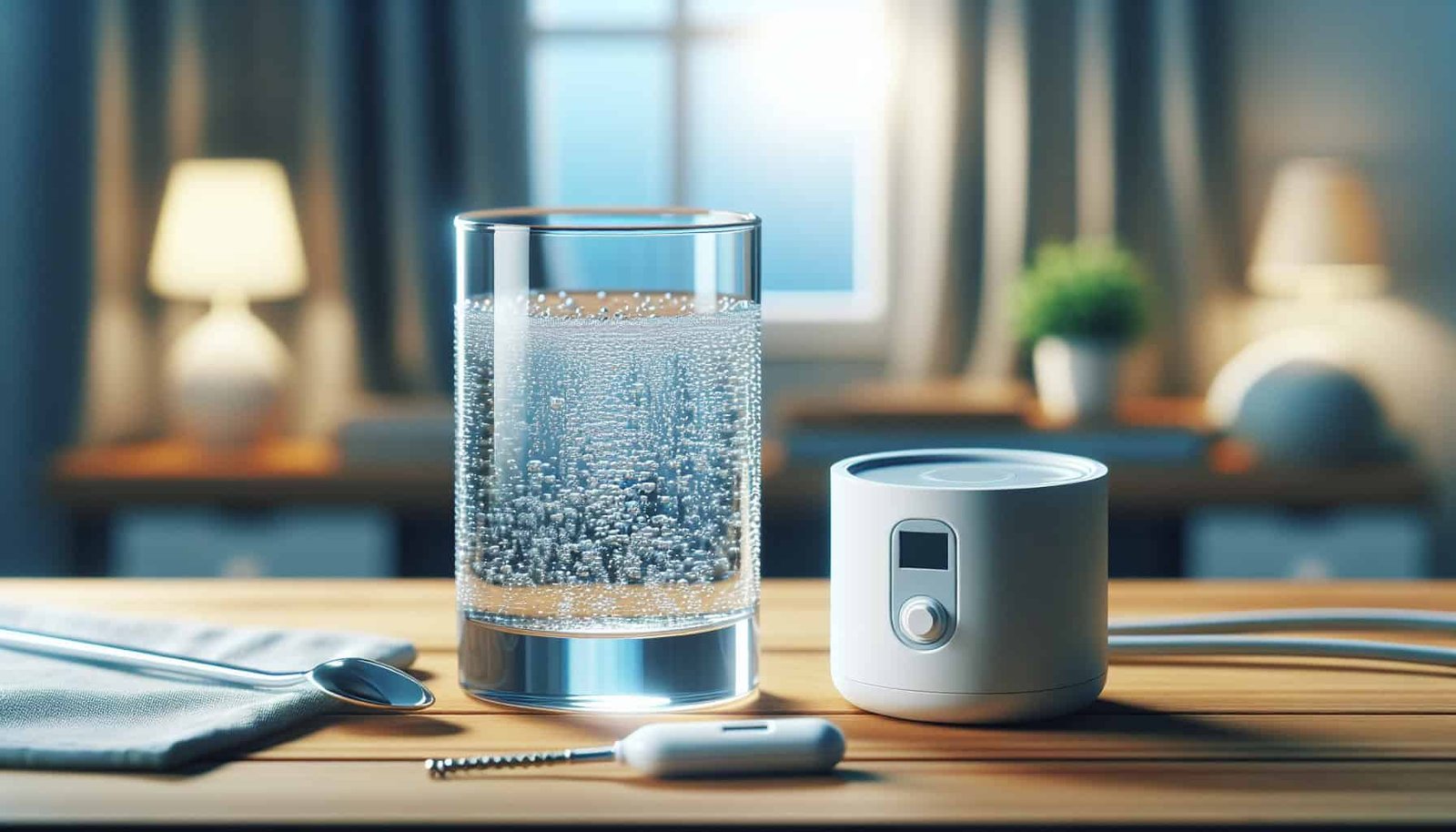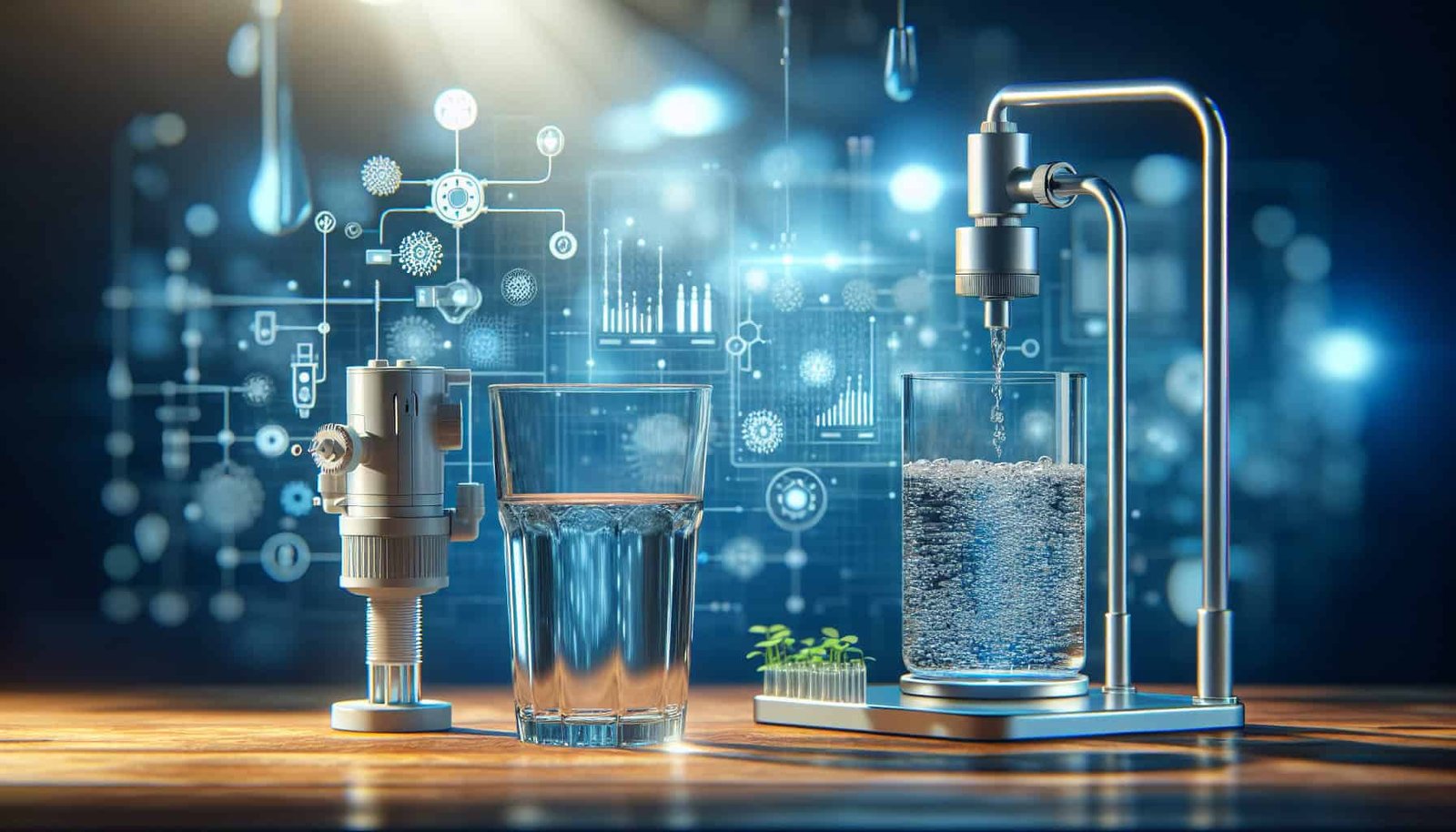Looking to find resources for well owners interested in well water disinfection methods? Look no further! This article provides you with a comprehensive guide on where to find the best resources to help you disinfect your well water. Whether you’re a well owner looking to ensure the safety and cleanliness of your water or simply curious about the various methods available, we’ve got you covered. From websites and online forums to government agencies and local organizations, we highlight some of the top places to seek valuable information and guidance on disinfection methods for well water. Don’t miss out on this essential information – read on to discover how you can access the resources you need.

Overview of Well Water Disinfection
Understanding the Importance of Well Water Disinfection
When it comes to well water, it is essential to prioritize disinfection for several reasons. Well water often comes from underground sources and is susceptible to contamination from various pollutants. Disinfection helps eliminate harmful microorganisms, bacteria, and viruses that can pose health risks if consumed. By ensuring your well water is properly disinfected, you can protect yourself and your family from waterborne illnesses and enjoy clean, safe drinking water.
Common Contaminants in Well Water
It is important to be aware of the potential contaminants that can be present in well water. Some common contaminants include bacteria like E. coli, viruses, parasites, and harmful chemicals such as nitrates, pesticides, and heavy metals. Understanding the specific contaminants found in your well water is crucial for selecting the appropriate disinfection method and ensuring effective treatment.
Health Risks Associated with Contaminated Well Water
Drinking contaminated well water can have serious health consequences. Waterborne diseases can cause diarrhea, vomiting, stomach cramps, and in severe cases, may lead to hospitalization. Certain contaminants like nitrates can pose significant risks to infants and pregnant women, potentially affecting the development of the unborn child. By disinfecting your well water, you can minimize the health risks associated with consuming contaminated water.
Testing Well Water Quality
Identifying the Need for Well Water Disinfection
Before choosing a disinfection method, it is vital to test the quality of your well water. Testing will identify the presence of any contaminants and help determine the appropriate course of action. Regular testing is recommended to ensure ongoing monitoring of the water quality, especially if there are changes in taste, odor, or color. If the test results indicate the presence of harmful bacteria, viruses, or chemicals, disinfection is crucial to safeguard your health and the well-being of your loved ones.
Choosing a Reliable Testing Method
To accurately assess your well water quality, it is essential to choose a reliable testing method. There are different testing options available that can be performed by certified laboratories or through DIY test kits. Laboratory tests conducted by professionals can provide more comprehensive results but may be costlier. DIY test kits are affordable and convenient, allowing you to gather initial information about your well water quality. Regardless of the method chosen, ensure that the test covers a broad range of contaminants relevant to your area.
Interpreting Test Results
Once the test results are obtained, it is important to understand and interpret them correctly. The test report will indicate the presence and concentration levels of various contaminants in your well water. It is worth consulting with professionals or experts to help you interpret the results accurately. They can provide guidance on the necessary measures, including disinfection methods, based on the specific contaminants detected and their concentrations.
Disinfection Methods for Well Water
Chlorination
Chlorination is one of the most commonly used methods for disinfecting well water. It involves adding chlorine, typically in the form of calcium hypochlorite or sodium hypochlorite, to the water. Chlorine is highly effective in neutralizing bacteria, viruses, and other microorganisms that may be present. It is important to carefully follow dosage instructions to ensure proper disinfection while avoiding any adverse effects due to excessive chlorine levels.
Shock Chlorination
Shock chlorination is a more intensive form of chlorination used to treat severe contamination issues. This method involves adding a high concentration of chlorine to the well water to effectively eliminate bacteria and other contaminants. Shock chlorination is typically recommended after new well construction or if the well has been found to be contaminated with harmful bacteria. Following the shock chlorination process, it is important to flush the system thoroughly before consuming the water.
Ultraviolet (UV) Disinfection
UV disinfection is an increasingly popular and efficient method for treating well water. It involves using a UV light source to irradiate the water, effectively destroying microorganisms. UV disinfection does not introduce any chemicals into the water, making it a chemical-free alternative. However, it is important to note that UV disinfection is not effective against certain contaminants like chemicals, metals, or sediment. UV systems should be properly sized and installed to ensure optimal disinfection.
Ozonation
Ozonation is another method that can effectively disinfect well water. Ozone is a powerful oxidizer that destroys microorganisms by breaking down their cell walls. It can effectively neutralize bacteria, viruses, and other contaminants. Ozonation also helps remove odors and improve the taste of the water. However, ozonation systems can be more complex and expensive to install compared to other disinfection methods.
Filtration Techniques
Filtration techniques can be used in conjunction with disinfection methods to provide additional protection against certain contaminants. There are various types of filtration methods available, such as activated carbon filters, reverse osmosis, and sediment filters. These filters can remove impurities, sediment, and certain chemicals from the well water, enhancing the overall disinfection process and improving water quality.
Chemical Disinfection Options
In addition to chlorine-based disinfection methods, there are other chemical disinfection options available. For example, hydrogen peroxide and chlorine dioxide can be used to effectively disinfect well water. These chemical disinfectants offer alternative solutions for specific disinfection needs. However, it is important to handle and use these chemicals safely, with proper dosage and application methods.
Factors to Consider When Selecting Disinfection Methods
Water Usage
The amount of water consumed and the anticipated usage should be considered when selecting a disinfection method. Different methods may have specific water flow rate requirements or limitations. For example, UV disinfection systems are designed to treat a certain volume of water per minute, while other methods may have specific contact time requirements. Understanding your water usage patterns will help determine the suitable disinfection method.
Contamination Level
The level of contamination present in your well water is a critical factor in selecting the most effective disinfection method. If the contamination is severe, shock chlorination or other intensive disinfection methods may be necessary. For lower levels of contamination, regular chlorination or UV disinfection methods may be sufficient. Testing the water quality and consulting with experts will aid in determining the appropriate method based on contamination levels.
Available Resources
Consider the available resources, such as electricity and space, when choosing a disinfection method. Some methods, like UV disinfection and ozonation, require a power source to operate effectively. Additionally, these methods may require installation space for the necessary equipment. Evaluating the availability of these resources will help determine the practicality and feasibility of each disinfection method.
Budgetary Constraints
Budgetary constraints are another crucial consideration when deciding on a disinfection method. The cost of equipment, installation, maintenance, and ongoing operation may vary significantly among different methods. It is important to evaluate your budget and weigh the costs against the benefits of each disinfection method. This will help you make a well-informed decision that fits within your financial means.
Maintenance Requirements
The maintenance requirements of each disinfection method should also be taken into account. Some methods may require regular maintenance, such as changing filters, monitoring chlorine levels, or replacing UV lamps. Understanding and being prepared for the maintenance tasks associated with each method will ensure the long-term effectiveness of your chosen disinfection system.

Understanding the Chlorination Process
Basics of Chlorine Disinfection
Chlorine disinfection involves adding the appropriate amount of chlorine to well water to effectively neutralize harmful microorganisms. The chlorine reacts with organic matter and microorganisms, preventing them from reproducing and causing health risks. It is important to select chlorine compounds suitable for disinfection and follow recommended guidelines for dosage and contact time. Proper handling and application of chlorine are crucial to ensure effective disinfection while avoiding potential health hazards associated with excessive chlorine levels.
Calculating Chlorine Dosage
Calculating the appropriate chlorine dosage is essential to achieve effective disinfection. Factors such as the volume of water, the chlorine concentration, and the desired disinfection level need to be considered. Depending on the contamination levels and disinfection requirements, the dosage may vary. Consulting with experts or using chlorine dosage charts can help determine the optimal dosage specific to your well water situation.
Determining Contact Time
Contact time refers to the duration that the chlorine needs to remain in contact with the water to achieve proper disinfection. This duration allows the chlorine to react with microorganisms and effectively kill them. The recommended contact time may vary depending on the disinfection method chosen and the specific contaminants present. Following the guidelines provided by experts or professionals will ensure that the desired contact time is achieved for successful disinfection.
Performing Shock Chlorination
Preparing for Shock Chlorination
Before performing shock chlorination, it is important to take certain precautions and prepare the well system. Start by turning off any electrical equipment connected to the well to avoid potential damage. Ensure that the well water supply is shut off and all faucets are closed. Remove any debris or sediment present in the well. It is recommended to wear appropriate protective gear, such as gloves and safety goggles, when working with chlorine.
Step-by-Step Instructions for Shock Chlorination
- Calculate the appropriate amount of chlorine for shock chlorination based on the well water volume and contamination level.
- Dissolve the chlorine powder or tablets in a bucket of water according to the manufacturer’s instructions.
- Pour the chlorine solution evenly into the well, avoiding any contact with the skin or eyes.
- Turn on a nearby faucet and allow the chlorinated water to flow through the entire system. Ensure all faucets are left open during the process.
- Allow the chlorinated water to remain in the system for the recommended contact time, typically around 24 to 48 hours.
- After the contact time has passed, flush the system by running the water through all faucets until the chlorine smell dissipates.
- Test the water to confirm that chlorine levels have returned to a safe level and the well water is ready for consumption.
Post-Chlorination Recommendations
After shock chlorination, it is important to conduct follow-up testing to confirm the effectiveness of the treatment. Ensure that the chlorine levels have returned to a safe range and that harmful microorganisms have been eliminated. Regular testing and monitoring of the well water quality will help identify any potential issues and allow for timely action.

Benefits and Limitations of UV Disinfection
Advantages of UV Disinfection
UV disinfection offers numerous advantages for well water disinfection. Firstly, UV disinfection is a chemical-free method, eliminating the need for additional chemicals in the water treatment process. It effectively neutralizes bacteria, viruses, and other microorganisms without altering the taste or odor of the water. UV disinfection is also highly efficient, providing quick and reliable disinfection results. Furthermore, UV systems are generally low maintenance, requiring only periodic lamp replacement.
Limitations of UV Disinfection
While UV disinfection is highly effective against microorganisms, it has certain limitations. UV light cannot remove chemicals, heavy metals, or sediment from the water. If your well water contains high levels of such contaminants, additional filtration methods may be necessary. UV disinfection also requires a power source, which may not be readily available in remote areas. Therefore, it is essential to test the water quality and evaluate if the specific limitations of UV disinfection pose any challenges for your well water disinfection needs.
Considerations for Proper UV System Installation
Installing a UV disinfection system correctly is crucial to ensure its optimal performance. Consider the following factors when installing a UV system:
Proper Sizing: Choose a UV system that can handle the flow rate and volume of your well water. Undersized systems may not provide sufficient disinfection, while oversized systems may result in excessive energy consumption.
Pre-filtration: Install a pre-filter to remove sediment and larger particles before the water enters the UV system. This helps prevent potential blockages in the system and maintains its effectiveness.
Lamp Maintenance: Follow the manufacturer’s instructions for replacing UV lamps regularly. Over time, the UV lamps may lose their effectiveness, resulting in insufficient disinfection.
Validation Testing: Periodically conduct validation testing to ensure that the UV system is delivering the necessary dosage for effective disinfection. This testing helps confirm that the system is operating correctly and providing adequate protection against microorganisms.
Exploring Ozonation as a Disinfection Method
Understanding the Ozone Disinfection Process
Ozone disinfection involves the generation of ozone gas, comprised of three oxygen atoms. Ozone is a powerful oxidizer and destroys microorganisms by breaking down their cell walls. The ozone gas is introduced into the water, where it reacts with any present contaminants, effectively neutralizing them. This method is highly effective in disinfecting well water, eliminating bacteria, viruses, and other harmful microbes.
Benefits of Ozone Disinfection
Ozone disinfection offers several advantages. Firstly, ozone is a powerful disinfectant, effectively neutralizing a wide range of microorganisms. It can also remove foul odors and improve the taste of the water. Unlike some other disinfection methods, ozone does not leave chemical residuals in the water, making it a popular choice for those looking for a chemical-free disinfection solution. Furthermore, ozone is a quick-acting disinfectant, providing rapid results.
Factors Affecting Ozone Efficiency
Several factors can affect the efficiency of ozone disinfection. Water quality, including its pH level and the presence of certain minerals or compounds, can impact the effectiveness of ozone. Higher levels of organic matter or specific contaminants may require longer contact time or higher ozone doses for successful disinfection. It is crucial to consider these factors and consult with experts to ensure that ozone is a suitable disinfection method for your well water.

Utilizing Filtration Techniques for Well Water Disinfection
Types of Filtration Methods
There are various types of filtration methods that can be used alongside disinfection techniques to further improve well water quality. Some common filtration methods include:
Activated Carbon Filters: These filters are effective in removing chlorine, volatile organic compounds (VOCs), and undesirable odors from the water.
Reverse Osmosis: Reverse osmosis filters use a semi-permeable membrane to remove impurities, including dissolved solids, heavy metals, and certain chemicals.
Sediment Filters: Sediment filters are designed to capture and remove larger particles, sediment, and debris from the water, preventing them from entering the disinfected water supply.
Choosing the Right Filtration System for Your Well Water
Selecting the appropriate filtration system depends on the specific contaminants present in your well water. Consider the results of the water quality tests to determine which filtration methods are most effective for your needs. For example, if your well water contains high levels of sediment or visible particulate matter, a sediment filter would be beneficial. If removing certain chemicals is a concern, a combination of activated carbon and reverse osmosis may be required. Consultation with water treatment experts can help identify the most suitable filtration methods for your well water disinfection.
Maintenance and Replacement of Filters
Regular maintenance and timely replacement of filters are crucial to ensure the effectiveness of filtration systems. The frequency of maintenance and replacement depends on various factors, such as the level of contamination, water usage, and the type of filter used. Sediment filters may require more frequent replacement compared to activated carbon or reverse osmosis filters. Follow the manufacturer’s instructions and monitor the condition of the filters to determine the appropriate maintenance schedule. This will help maintain optimal filtration performance and ensure clean, safe water.
Where to Find Resources for Well Owners
Local Health Departments
Local health departments often provide resources and information related to well water disinfection. They can offer guidance on testing procedures, explain the potential health risks associated with specific contaminants, and recommend appropriate disinfection methods. Contact your local health department to access valuable resources tailored to your specific location.
State Environmental Agencies
State environmental agencies are excellent sources of information for well owners. They provide guidelines and regulations related to well water quality and disinfection. These agencies may also offer educational materials, workshops, or training programs to help well owners understand the importance of disinfection and navigate the various options available. Visit the website or contact your state’s environmental agency for comprehensive resources and assistance.
University Extension Programs
University extension programs often offer valuable resources for well owners interested in well water disinfection methods. These programs conduct research and provide educational materials to promote safe and healthy well water practices. They may offer workshops, webinars, or publications specifically tailored to well water disinfection. Consider reaching out to your local university extension program to access their resources and expertise.
Well Water Testing Laboratories
Well water testing laboratories are reputable sources for detailed analysis of your well water quality. They can perform comprehensive tests for a wide range of contaminants and provide accurate results. Additionally, these laboratories often offer guidance and recommendations based on the test results, including specific disinfection methods suitable for your well water. Research local well water testing laboratories in your area and choose a certified and accredited facility to ensure reliable and accurate testing.
Online Resources and Websites
The internet provides a vast array of resources for well owners interested in well water disinfection methods. Numerous websites offer information, articles, and forums dedicated to well water treatment and disinfection. These online resources can provide valuable insights, helpful tips, and answers to frequently asked questions. However, it is important to ensure that the sources are reputable and based on scientific evidence. Consider utilizing online resources as supplementary information while relying on professional expertise for crucial decisions regarding well water disinfection.
In conclusion, well water disinfection is crucial for ensuring safe and clean water for you and your family. Understanding the importance of disinfection, testing well water quality, choosing appropriate disinfection methods, and considering various factors are vital steps in maintaining water quality. By utilizing reliable resources and consulting with experts, well owners can confidently implement effective well water disinfection practices and enjoy the benefits of clean, safe drinking water.


